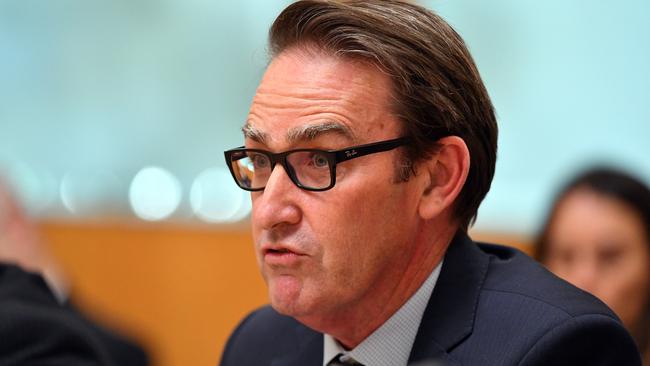Australian Treasury head says full employment is the goal
The Australian Treasury Secretary said aiming for full employment implies a slow, or ‘tapered’, withdrawal of monetary and fiscal stimulus.

For Australian Treasury Secretary Steven Kennedy, economic policy makers have every reason to not rush to raise interest rates in favour of pursuing full employment, a rarely achieved benchmark that is now tantalisingly within reach.
Mr Kennedy, who also sits on the policymaking board of the Reserve Bank of Australia, said on Wednesday that aiming for achingly close prize of full employment implies a slow, or “tapered”, withdrawal of the monetary and fiscal stimulus put in place to soften the blow of the Covid-19 pandemic.
The comments back RBA Governor Philip Lowe’s policy position and should serve as a warning to money markets traders who have been dramatically upping bets on aggressive interest rate increases this year.
Gareth Aird, head of Australian Economics at the Commonwealth Bank of Australia, said this week that the first increase in interest rates could come as early as June. Money markets expect the official cash rate to rise from the current record-low 0.10 per cent to 1.00 per cent by October.
Australia’s unemployment rate fell to 4.2 per cent in December, putting full employment within reach for the first time in half a century. While both the Treasury and the RBA are unclear about what full employment looks like, the best estimates put it in the range of a high 3 per cent or low 4 per cent unemployment rate.
Accelerated wage growth, something the RBA wants to see, will signal that the threshold of full employment has been achieved.
“We should approach low levels of unemployment steadily but it [the risk of accelerated wages growth and inflation] certainly do not outweigh the argument for persistently testing these boundaries,” Mr. Kennedy said.
To be sure, policy makers know they are — for the first time in living memory — close to achieving the economic nirvana of solid economic growth, full employment, rising wages and inflation within the 2-3 per cent band.
It’s proving very tempting, and tightening the policy screws too soon could ruin everything.
But none of this was supposed to happen.
Large external shocks to the economy normally result in deep recessions and what’s known as labour market scarring. Recessions normally toss young and low-skilled workers into long-term unemployment. Getting them back into the job market can take years. That in turn reduces the size of the labour pool, which means wages and inflation rise while unemployment is still elevated.
But Mr Kennedy said there is no scarring as fiscal stimulus during the pandemic was directed at supporting incomes and keeping workers on payrolls, even when businesses closed during lockdowns.
“At this stage, there is no evidence of any labour market scarring and the debate has shifted to how low the unemployment rate can fall and be maintained, without generating rising inflationary pressures,” he said.
The danger for policy makers is that they may over-estimate employment figures and tighten policy too soon, thereby preventing Australia from attaining full employment, Mr. Kennedy said.
The Wall Street Journal





To join the conversation, please log in. Don't have an account? Register
Join the conversation, you are commenting as Logout